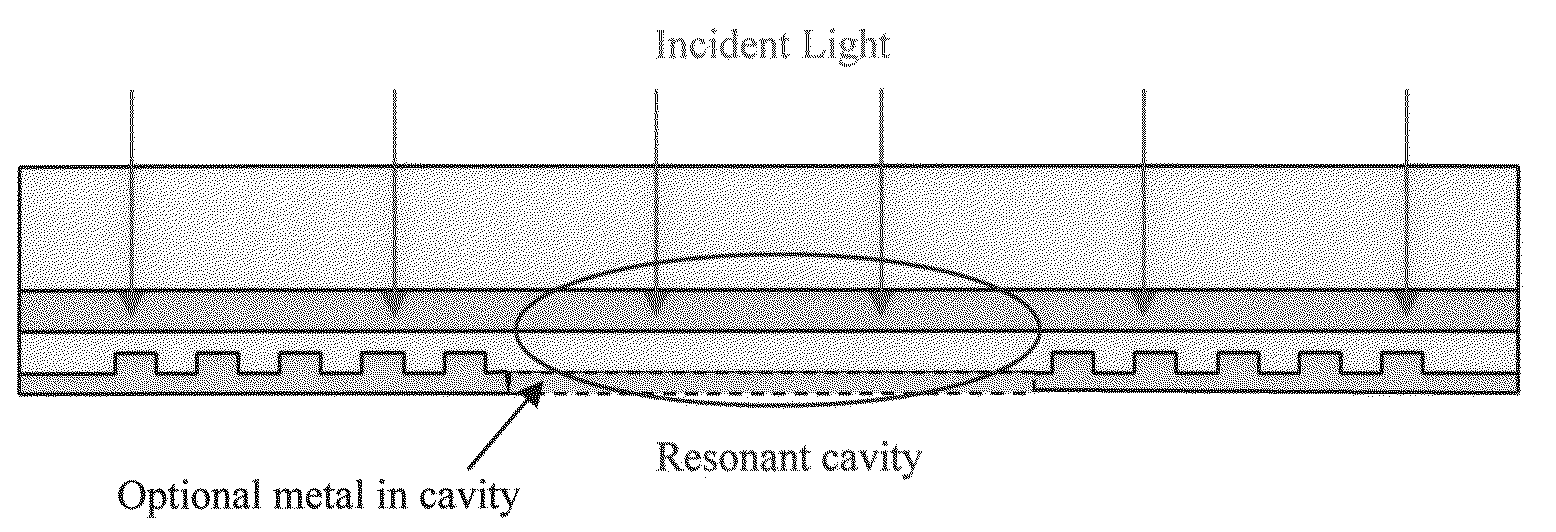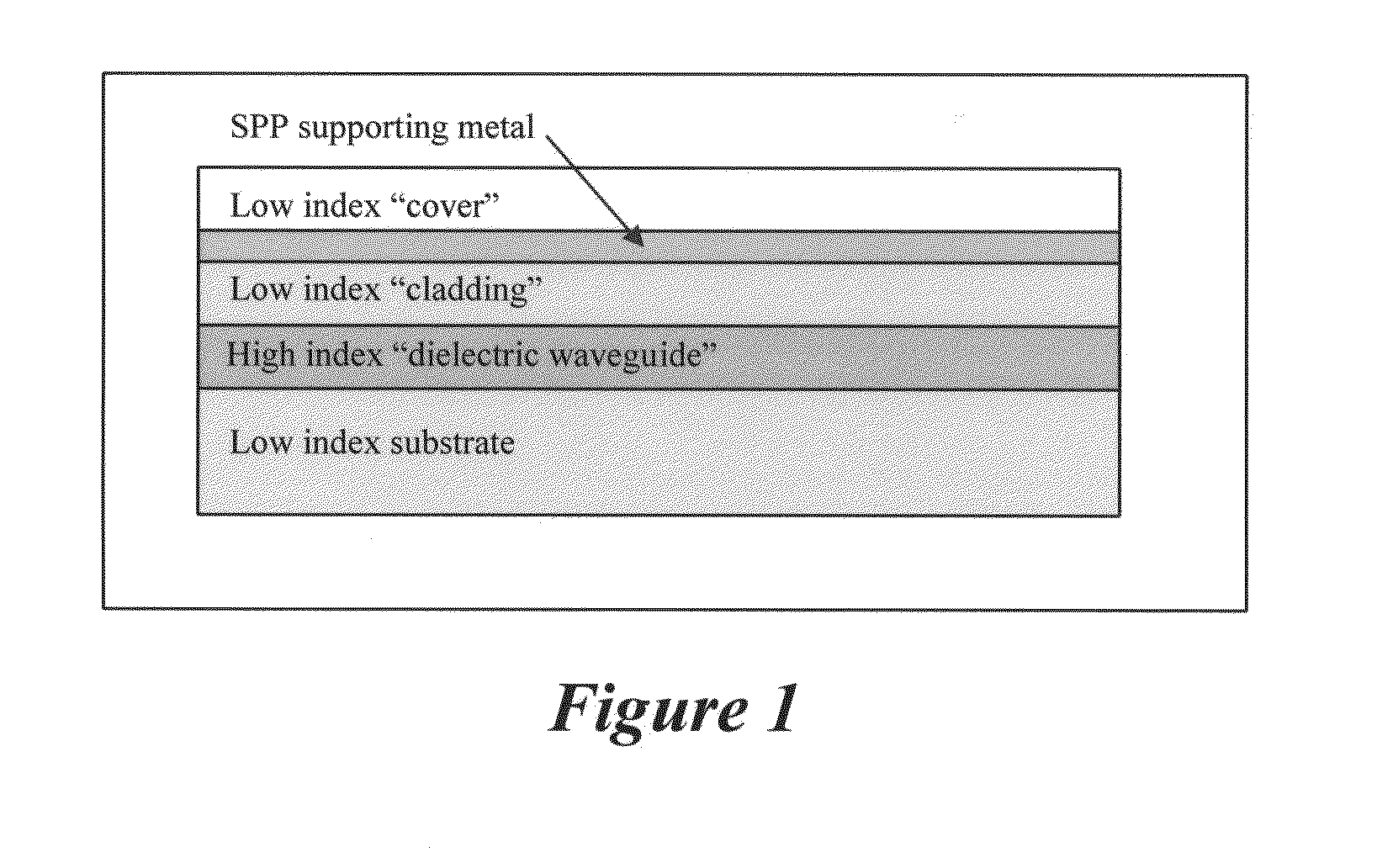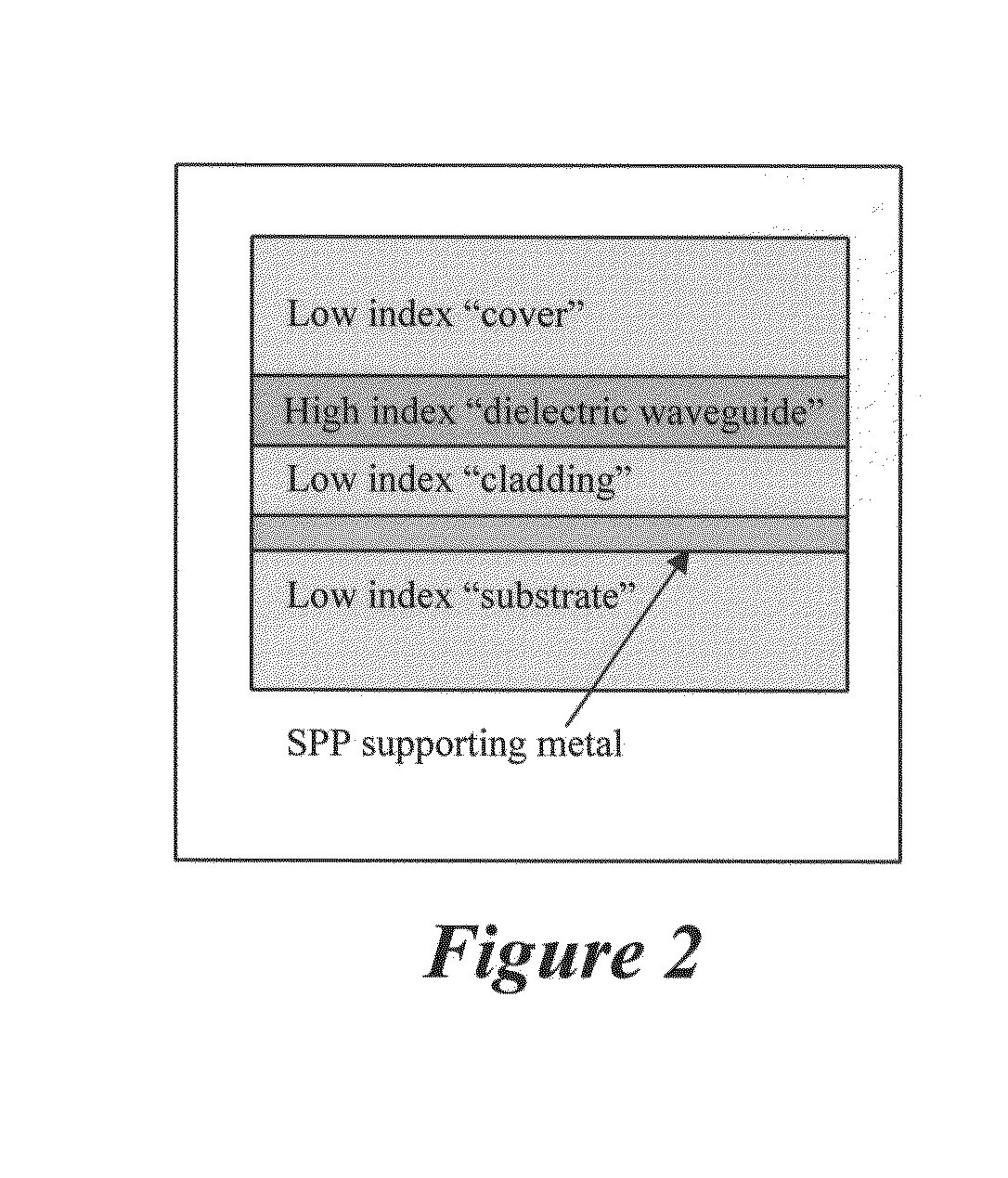Hybrid dielectric/surface plasmon polariton waveguide with grating coupling
a surface plasmon polariton and waveguide technology, applied in the field of waveguides, can solve the problems of low efficiency, dramatic loss, and decrease in propagation length, and achieve the effects of effective energy transfer, easy fabrication, and longer propagation rang
- Summary
- Abstract
- Description
- Claims
- Application Information
AI Technical Summary
Benefits of technology
Problems solved by technology
Method used
Image
Examples
Embodiment Construction
[0030]FIG. 1 shows components of the dielectric / SPP waveguide structure in accordance with at least some embodiments of the present invention:[0031]1) A bulk material (called substrate in the figure).[0032]2) A “dielectric waveguide” layer made of material with higher index than the substrate.[0033]3) A “cladding” layer with index lower than the dielectric waveguide layer.[0034]4) A metal layer (also referred to as the SPP layer) that is a good conductor over the spectral range of interest. This can be made very thin in order to increase the range of the surface plasmon mode, or may be made thick to confine propagation to one side of the metal.[0035]5) A “cover” layer typically of index lower than the dielectric waveguide layer. If the metal layer is thick enough that the SPP mode is one sided, it doesn't matter what the index of this layer is; if the metal is thin to decrease metallic losses, then the index should be lower than the dielectric waveguide layer. This could be air (no ...
PUM
 Login to View More
Login to View More Abstract
Description
Claims
Application Information
 Login to View More
Login to View More - R&D
- Intellectual Property
- Life Sciences
- Materials
- Tech Scout
- Unparalleled Data Quality
- Higher Quality Content
- 60% Fewer Hallucinations
Browse by: Latest US Patents, China's latest patents, Technical Efficacy Thesaurus, Application Domain, Technology Topic, Popular Technical Reports.
© 2025 PatSnap. All rights reserved.Legal|Privacy policy|Modern Slavery Act Transparency Statement|Sitemap|About US| Contact US: help@patsnap.com



